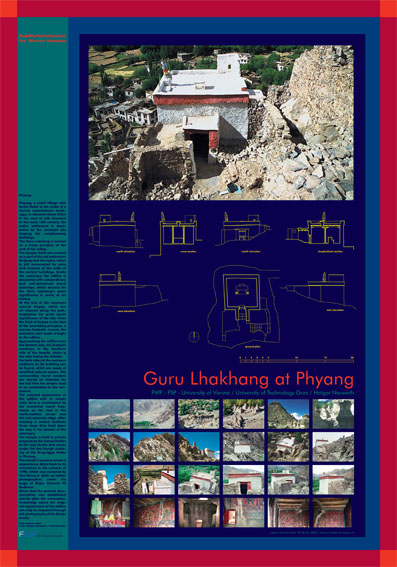
The Guru Lakhang is located on a steep precipice at the end of
the valley.The temple itself was erected as a part of the old
settlement Mrijang and the castle, which is still surrounded
by ruins and remains
of the walls of the ancient buildings. Inside the sanctuary the
edifice is decorated with extraordinary and well-preserved mural
paintings, which account for the Guru Lakhang’s great significance
in terms of art history. At the foot of the mountain several Stupas,
which are all situated along the path, emphasise the great sacral
significance of the
site. From the field of Stupas in the East of the ascending precipice,
a narrow footpath crosses the mountain and leads straight to the
edifice. Approaching the edifice from the Eastern side, the footpath
continues to the Southern side of the temple, which is the side
facing the
hillside.
On both sides of the entrance additions to the building
can be found, which are made of stratified natural stones. The
surrounding
mural remains are merely an indicator for the fact that the temple
used to be embedded in the settlement. The outward appearance of
the edifice with its simple cubic form is accentuated by the numerous
mural fragments on the roof in the
north-eastern corner and the red-coloured ridge. After crossing
a roofed vestibule three steps then lead down the way to the interior
of the sanctuary.[...]
The temple’s present outward appearance dates back to its
renovation in the summer of 1998, which was executed by Shri Benoy
K. Behl, an Indian photographer, under the aegis of Major General
VS Budhwar. Given that the present documentation was established
shortly after the renovation, knowledge about the original appearance
of the
edifice can only be acquired through old photographs of the Gonja
family.
Text: Carmen Auer
Fotos: Holger Neuwirth / Carmen Auer